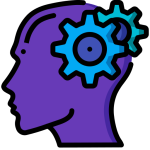
Logic and Learning: Fostering Critical Thinking in the Computer Science Classroom
In the rapidly evolving world of technology, fostering critical thinking in students is paramount. As a teacher of Computer Science, you have the unique opportunity to develop this crucial skill through various strategies and approaches. Here are practical tips on how to build critical thinking skills through computer science problems.

1. Encourage Inquiry-Based Learning:
Instead of providing direct answers, pose open-ended questions. For example, ask, "What could be the possible outcomes of this code?" or "How might this algorithm be improved?" This approach promotes deeper thinking and exploration.

2. Utilise Real-World Problems:
Connect computer science problems to real-world scenarios. This makes learning relevant and challenges students to apply their knowledge in practical contexts. For instance, ask students to develop a program addressing a current issue.

3. Promote Algorithmic Thinking:
Encourage students to break down problems into smaller, manageable parts, a key aspect of algorithmic thinking. Use CSUK’s algorithm writing workbook as a guide to foster this structured approach to problem-solving.

4. Encourage Peer Review and Collaboration:
Foster a classroom culture where students review each other’s code and collaborate on solutions. This not only builds critical thinking but also communication and teamwork skills.

Practical Implementation Tips:
Use CSUK’s Resources for Diverse Problems:
Leverage the variety of problems and scenarios available in CSUK’s workbooks and lesson materials. This diversity challenges students to think critically in different contexts.
Incorporate Brain Quest Worksheets:
Use CSUK’s 'do now' brain quest worksheets at the beginning of lessons. These quick, thought-provoking problems can warm up students’ minds and set the tone for critical thinking.
Implement a 'Think-Pair-Share' Approach:
In this approach, students first think about a problem individually, then discuss it with a partner, and finally share their insights with the class. This structured method can enhance critical thinking skills.
Encourage Reflection:
After completing a project or solving a problem, encourage students to reflect on their process. Ask questions like, "What was challenging?", "How did you overcome obstacles?", and "What would you do differently next time?"
Building critical thinking through computer science is not just about teaching coding or algorithms; it’s about nurturing a mindset that questions, analyses, and innovates. By incorporating these strategies into your teaching, you provide your students with tools that are invaluable in computer science and beyond. Remember, critical thinking is a journey, not just a destination, and every problem encountered is an opportunity for growth and learning.